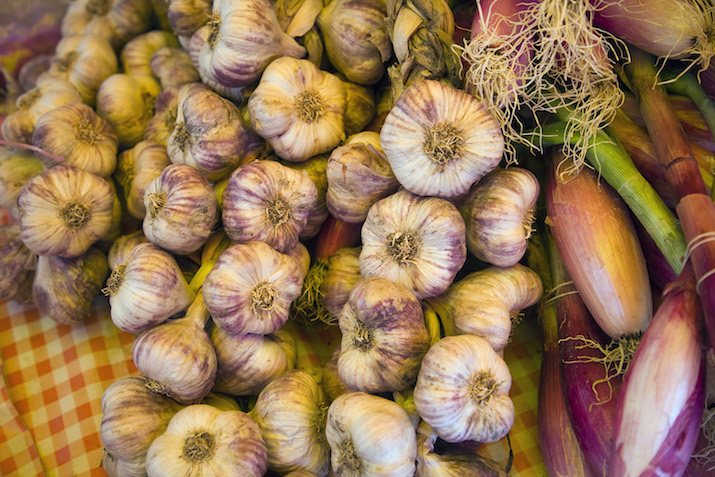Nutrition
I meet with many clients who need advice on nutrition–how much to eat, what to eat, when to eat, etc. When I get into the particulars of nutrition and introduce calorie counting as a method of educating clients on what they are truly eating, that’s when things have a tendency to come to a screeching halt.
When I get into figuring out your BMR (how many calories your body needs to keep all metabolic processes running when resting,) and then adding in a basic guess of how many calories you burn over the course of a day to find out what your total caloric expenditure is, that’s when many start to check out. Then, when we get into figuring out what the calorie count of everything you’re eating is, then making sure this becomes a habit, that’s when the reality sets in that many will not be willing to continue or cannot fit it into their busy lifestyles.
So to make it simple, I’ve compiled a short list of “Golden Rules”. These rules are basic and should be pretty easy to follow. So, before you stuff anything into your mouth, ask yourself if it follows these rules. If it does not, consider finding an alternative.
6 Golden Rules for Nutrition
- Eat as close to the natural product as possible. Make sure you can describe all the ingredients in one name – chicken, fish, tomato, lettuce, etc.
- Eat for what you’re doing, not because you feel like you have to. (Carbs = Glucose = Energy) If you plan on being active and burning many calories consider have a serving of carbohydrates an hour before and then shortly after. Otherwise, focus on lean protein and good fats.
- Eat less food, and stop eating before you’re full. Eating at a caloric deficit has shown in numerous studies to slow the aging process in animal, and some researchers believe it’s the single most prevalent link to caner prevention.
- Avoid processed sugar.
- Drink lots of water. 2 liters to a half gallon a day.
- Limit alcohol consumption.
These are great for beginning to instill new habits into your daily routine. However, none of this really matters if you don’t have Healthy Intestinal Flora (good bacteria in the gut). Because if your body isn’t ready to absorb quality nutrition, then we have to fix that first.
Digestion
Taking some quality digestive enzymes is the first step in healing and invigorating the intestines. There are three main choices when it comes to selecting an enzyme. The first is Betaine HC1; this can be prescribed to those who have too little hydrochloric acid in their stomachs or suffer from acid reflux. It has properties that also help with thyroid disorder and food allergies. A multi-enzyme product is another form of digestive enzyme, and it supports the enzymatic action through the digestive process. Third is single enzymes that work if you know what single nutrient is causing gastric distress. Consult with your holistic healthcare provider to find the right combo for you.
Prebiotics and Probiotics
Prebiotic (non-soluble fibre) and Probiotic (good bacteria) will also help aid digestion by providing non-soluble fibre and bolstering good bacteria in the intestines. Not only will they help aid digestion but they will also improve your immune system, increase energy from production of B12 and help in weight loss. You can supplement these in pill and powdered form, but there are several types of food that will provide you with Pre- and Probiotics, some of them are:
Probiotic Foods:
- Kefir: Similar to yogurt, this fermented diary product is a unique combination of milk and fermented Kefir grains. The term Kefir was started in Russia and Turkey and means “feeling good”.
- Cultured vegetables: Sauerkraut and Kimchi are both made from fermented cabbage and other vegetables. They are high in enzymes, which can aid in digestion.
- Kombucha: An effervescent fermentation of black tea. It’s primary benefits include digestive support, increased energy and liver detoxification.
- Yogurt: Probably the most popular probiotic food. Made from the milk of a cow, goat or sheep. It can rank high on the probiotic food chart if it comes from raw grass-fed animals. When buying, be sure to look for 3 things. First, it comes from cow’s, goat’s, or sheep’s milk, second, it’s grass fed, and third, it’s organic.
Prebiotic Foods:
- Chicory Root: Is one of the best prebiotic food sources around. You can find it in the form of supplements or in ground form.
- Raw Jerusalem Artichoke: Also known as Sunroot or Sunchoke or, by many, the “fartichoke,” due to it’s impressive fibre content. It can be boiled, sautéed or roasted to resemble a creamy potato. Because of it’s low glycemic index it can be used in the place of potatoes for people with diabetes.
- Raw Garlic: Garlic is a nutrition powerhouse, loaded with tons of nutrients including manganese, vitamin B6, C and selenium.
- Raw Onion: Raw onions provide you with organic sulphur compounds, which are an important mineral in you body. They are destroyed when you cook them. Raw onions contain chromium to boost insulin production, quercetin, which fights off free radicals, and Vitamin C. Since most of the flavonoids are contained in the outermost layers of the onions, you should peel off as little as possible before chopping, dicing and tearing. So, in other words, don’t over-peel them! If raw onions give you heartburn or indigestion, consider cooked onions, another high prebiotic food.
As you can see, healthy nutrition is not just making smart choices when it comes to macro nutrients (carbs, protein, fats), but it also means paying attention to your digestive tract and how efficiently it’s performing.




